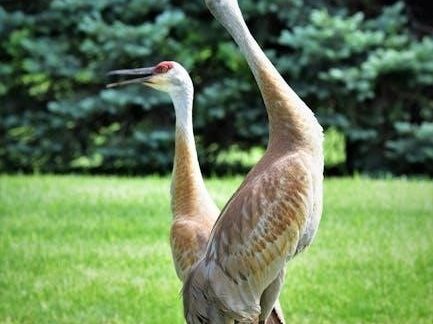Illinois boasts a vibrant bird diversity, with over 459 species documented, offering rich opportunities for birders. The state’s central location attracts migratory and resident birds alike.
From prairies to wetlands, Illinois’s varied ecosystems support a wide range of avifauna. This diversity makes it a hotspot for bird watching and ecological study.
The Illinois Ornithological Society highlights species like the American Robin and Northern Cardinal. Field guides are essential for identifying and understanding the state’s bird populations.
Bird conservation efforts in Illinois focus on protecting habitats and migratory routes. These initiatives ensure the survival of bird species for future generations to enjoy.
1.1 Overview of Bird Species in Illinois
Illinois is home to over 459 documented bird species, ranging from common backyard birds like the American Robin to migratory visitors such as warblers and waterfowl. The state’s location along major flyways makes it a critical stopover for migratory birds. Species diversity includes raptors, songbirds, and waterfowl, with habitats varying from prairies to wetlands. Field guides often organize species by color or habitat, aiding identification for birders of all levels.
1.2 Importance of Bird Watching in the Region
Bird watching in Illinois plays a crucial role in conservation, education, and tourism. It raises awareness about bird habitats and the need for preservation. Birders contribute to citizen science, aiding in species tracking and environmental monitoring. The hobby also boosts local economies through eco-tourism. Additionally, it fosters mental well-being by connecting people with nature and promoting a sense of community among enthusiasts.

Bird Identification Tips
Identifying birds requires observing size, color, beak shape, and plumage. Noting behaviors like flight patterns and songs also aids in accurate species recognition for Illinois birders.
2.1 Physical Characteristics for Accurate ID
Accurate bird identification relies on observing physical traits like size, shape, plumage, and color. Beak shape and leg color are also key. Field guides often organize birds by these features, making identification easier. Pay attention to distinctive markings, such as wing bars or head patterns. Seasonal changes in plumage can affect appearance, so consulting up-to-date guides is essential for Illinois birders.
2.2 Behavioral Traits in Bird Identification
Bird behavior is crucial for accurate identification. Listen for unique calls and songs, as species like the Northern Cardinal and American Robin have distinct vocalizations. Observe flight patterns, such as hawks soaring or sparrows flitting between shrubs. Note foraging behaviors, like woodpeckers drumming or nuthatches climbing down trees. Group behavior also helps—some birds, like Sandhill Cranes, migrate in flocks, while others, such as owls, are typically solitary. These traits, combined with physical features, enhance identification accuracy.
Bird Migration Patterns in Illinois
Illinois lies on the Mississippi Flyway, a key route for migratory birds. Species like warblers and waterfowl pass through seasonally, peaking in spring and fall.
3.1 Flyways and Migration Routes
Illinois is a critical stopover along the Mississippi Flyway, a major migration route for birds traveling between Canada and the Gulf of Mexico. Wetlands, forests, and prairies provide essential habitats for species like warblers and waterfowl during their journeys.
The state’s location at the intersection of the Mississippi and Central Flyways makes it a biodiversity hotspot, supporting millions of migratory birds each season. Key routes include the Illinois River Valley and Lake Michigan shoreline.
3.2 Timing of Migration Seasons
Illinois experiences distinct migration seasons, with spring migration typically occurring from late February to early May. Fall migration starts in late July and peaks through October and early November.
Warblers, tanagers, and orioles are common during spring, while waterfowl and raptors dominate fall movements. Timing varies by species, ensuring a dynamic birding experience throughout the year.

Habitat and Distribution
Illinois’s diverse ecosystems, including prairies, wetlands, and forests, support a wide variety of bird species. Its central location attracts both migratory and resident birds.
4.1 Ecosystems Supporting Bird Life
Illinois’s diverse ecosystems, including prairies, wetlands, forests, and urban areas, provide habitats for a wide range of bird species. These ecosystems support both migratory and resident birds, offering food, shelter, and breeding grounds. Wetlands are crucial for waterfowl, while forests attract songbirds. Grasslands and backyards with bird feeders also play significant roles in sustaining avian populations.
4.2 Geographic Distribution of Species
Illinois’s bird species distribution varies across its regions, with northern areas hosting migratory songbirds and southern regions supporting waterfowl. The state’s central location along major flyways ensures a mix of breeding, migratory, and wintering birds; Urban and rural areas also harbor distinct species, influenced by habitat availability. Field guides help identify species based on their geographic occurrence, aiding birders in exploring Illinois’s avian diversity across its diverse landscapes.
Conservation Efforts
Illinois’s conservation initiatives focus on habitat preservation and protecting migratory routes. Local organizations advocate for bird-friendly practices to safeguard species and their ecosystems, ensuring sustainable avian populations.
5.1 Threats to Bird Populations
Bird populations in Illinois face numerous threats, including habitat loss, climate change, and window collisions. Urbanization and agricultural expansion reduce natural habitats, while pesticides and invasive species further endanger bird communities.
Conservation efforts must address these challenges to protect Illinois’s avifauna. Public awareness and targeted initiatives are crucial to mitigate these threats and ensure the survival of bird species in the region.
5.2 Local Conservation Initiatives
Illinois hosts various local conservation efforts, such as habitat restoration projects and bird-friendly urban planning. Organizations like the Illinois Audubon Society and local birding clubs actively promote avian protection through education and community involvement.
Initiatives include creating bird sanctuaries, monitoring species populations, and engaging citizens in conservation activities. These efforts aim to safeguard Illinois’s bird diversity for future generations while fostering a deeper connection between people and nature.
Bird Feeding and Attracting
Bird feeding in Illinois is most beneficial during migration and winter when energy demands are high. Use feeders with black oil sunflower seeds to attract species like cardinals and finches;
Native plants and shrubs provide natural food sources, creating bird-friendly landscapes. Maintain feeders regularly to ensure they remain a reliable resource for local bird populations.
6.1 Best Practices for Feeding
Feeding birds in Illinois is most effective during migration and extreme weather. Offer high-energy foods like black oil sunflower seeds, suet, and nyjer seeds to support birds’ energy needs. Use clean, sturdy feeders designed for specific bird types to minimize waste and predation. Provide fresh water year-round, as hydration is crucial for survival. Maintain feeders regularly to prevent mold and disease, ensuring a safe and reliable food source for local bird populations.
6.2 Creating Bird-Friendly Landscapes
Designing bird-friendly landscapes in Illinois involves planting native vegetation, which provides essential food and shelter. Incorporate diverse habitats, such as shrubs, trees, and water features, to attract a variety of species. Avoid pesticides to protect birds and insects. Dense shrubs offer nesting sites, while open areas attract seed-eating birds. Maintain a water source, like a birdbath or pond, for drinking and bathing. This approach supports local bird populations and enhances biodiversity year-round.
Birding Hotspots in Illinois
Illinois offers exceptional birding locations, including wetlands, forests, and prairies. Key spots like Montezuma National Wildlife Refuge and Emiquon Preserve attract diverse species, making them must-visit destinations for bird enthusiasts.
7.1 Key Locations for Bird Watching
Illinois is home to premier birding spots, including Montezuma National Wildlife Refuge, known for waterfowl, and Emiquon Preserve, a haven for migratory species. Prairie Ridge State Natural Area and Crab Orchard National Wildlife Refuge also offer diverse habitats attracting rare birds. These locations provide ideal conditions for spotting species like herons, egrets, and sandpipers, making them essential stops for any serious birder exploring the state.
7.2 Seasonal Variations in Hotspots
Illinois birding hotspots vary by season, with spring and fall migrations bringing peak activity. Wetlands like Emiquon Preserve shine in spring with warblers and waterfowl, while summer highlights nesting species like herons. Fall sees shorebirds at Montezuma National Wildlife Refuge, and winter attracts waterfowl to southern regions like Crab Orchard National Wildlife Refuge. Each season offers unique birding opportunities, making Illinois a year-round destination for enthusiasts.
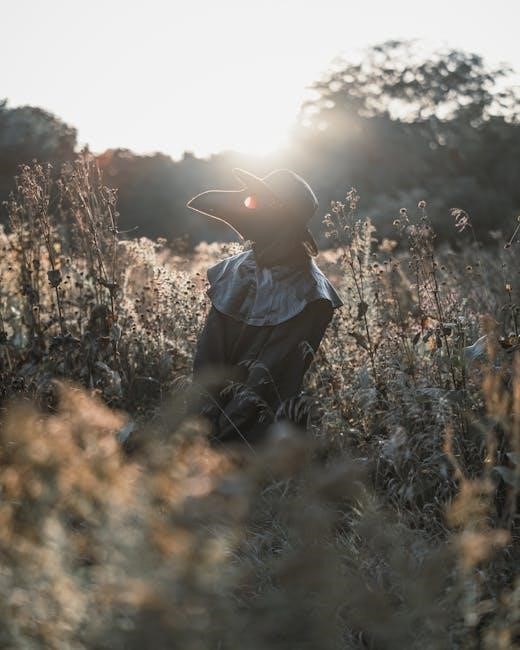
Bird Behavior and Social Patterns
Birds in Illinois exhibit diverse behaviors, from flocking during migration to unique foraging strategies. Their social patterns include mating rituals, territorial displays, and communal nesting, enriching the state’s avifauna.
8.1 Flocking Behavior
Flocking behavior among Illinois birds enhances foraging success and predator avoidance. Species like sandpipers and starlings synchronize movements, creating mesmerizing patterns. This social strategy is crucial during migration, offering safety in numbers. Flocks often consist of multiple species, fostering communal benefits. Understanding flocking patterns aids birders in identifying species and appreciating their adaptive strategies in Illinois’s diverse habitats.
8.2 Mating and Breeding Rituals
Illinois birds exhibit diverse mating and breeding rituals, often involving elaborate songs and displays. Species like the Northern Cardinal and American Robin use song to establish territory and attract mates. Courtship behaviors vary, from aerial displays by woodpeckers to ground-based dances by grouse. Nesting habitats range from tree cavities to ground nests, with females often incubating eggs while males provide food. These rituals are crucial for species survival and reproduction in Illinois’s ecosystems.
Audio Identification
Audio identification involves recognizing bird songs and calls, crucial for identifying species not easily seen. This method helps distinguish birds hidden by foliage or with similar appearances.
9.1 Recognizing Bird Calls and Songs
Recognizing bird calls and songs is a powerful tool for identifying species, especially when visual confirmation is challenging. Each bird species produces unique vocalizations, from melodious songs to distinct chirps. Learning these sounds enhances birding experiences, allowing enthusiasts to identify birds hidden in foliage or at a distance. Paying attention to pitch, rhythm, and repetition helps in distinguishing species. Seasonal variations and habitat-specific calls further refine identification skills, making audio recognition a vital complement to visual observation.
9.2 Using Audio for Accurate ID
Using audio recordings is a valuable method for identifying bird species accurately, especially for birds that are difficult to see; Bird calls and songs can be recorded and compared with field guide audio samples. Apps and online databases provide access to extensive libraries of bird vocalizations, enabling quick comparisons. Listening for distinct patterns, such as pitch, rhythm, and repetition, helps distinguish species. This approach is particularly useful for identifying birds during migration or in dense habitats where visibility is limited.
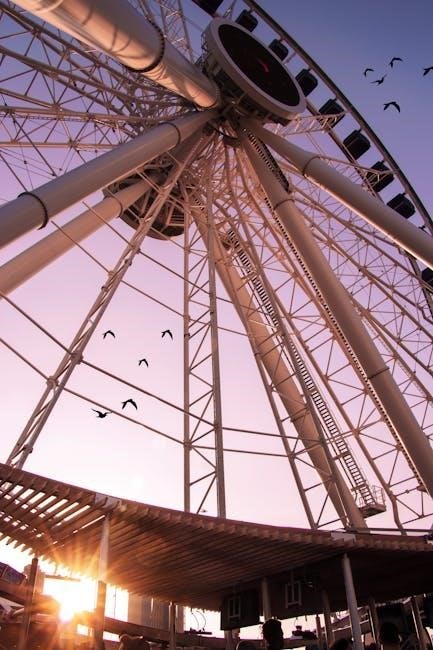
Photographing Birds
Photographing birds requires patience, skill, and the right equipment. Use telephoto lenses for clear shots, consider lighting, and experiment with angles to capture their beauty effectively.
10.1 Tips for Capturing Great Images
Photographing birds demands patience and the right techniques. Use a telephoto lens (at least 200mm) for crisp, detailed shots. Shoot during the golden hour for soft, natural light. Experiment with angles, capturing birds in flight or during unique behaviors. Keep the background simple to emphasize your subject. Anticipate movements and use burst mode for action shots. Carry a field guide to help identify species and plan your shots effectively.
10.2 Essential Gear for Bird Photography
- A DSLR or mirrorless camera with a telephoto lens (200mm or longer) is ideal for capturing distant birds.
- A sturdy tripod helps stabilize the camera for sharper images, especially in low light.
- Binoculars are crucial for spotting birds before photographing them.
- A field guide aids in identifying species and planning shots effectively.
- Carry extra memory cards and batteries to avoid missing opportunities.
- Dress in camouflage or muted colors to blend in and get closer to birds.
- Consider a camera hide or blind for discreet shooting in sensitive habitats.
Birding Ethics
Birding ethics emphasize respecting birds and their habitats. Avoid disturbing nests, keep a safe distance, and never bait birds. Responsible practices ensure their well-being and environment.
11.1 Responsible Bird Watching Practices
Responsible bird watching involves minimizing habitat disruption. Stay on designated trails, avoid disturbing nests, and keep noise levels low to prevent stressing birds. Always maintain a safe distance to allow birds to behave naturally.
Support conservation efforts by reporting sightings and participating in local initiatives. Use eco-friendly gear and respect protected areas. These practices ensure sustainable birding while preserving Illinois’s rich avifauna for future generations.
11.2 Minimizing Impact on Bird Habitats
Minimizing impact on bird habitats is crucial for their survival. Avoid disturbing nesting sites or sensitive ecosystems, and refrain from littering. Stay on designated trails to prevent trampling vegetation. Keep pets under control, as they can disrupt birds. Avoid using herbicides or pesticides, which harm birds and their food sources. By taking these steps, birders can help preserve Illinois’s vital bird habitats for future generations.
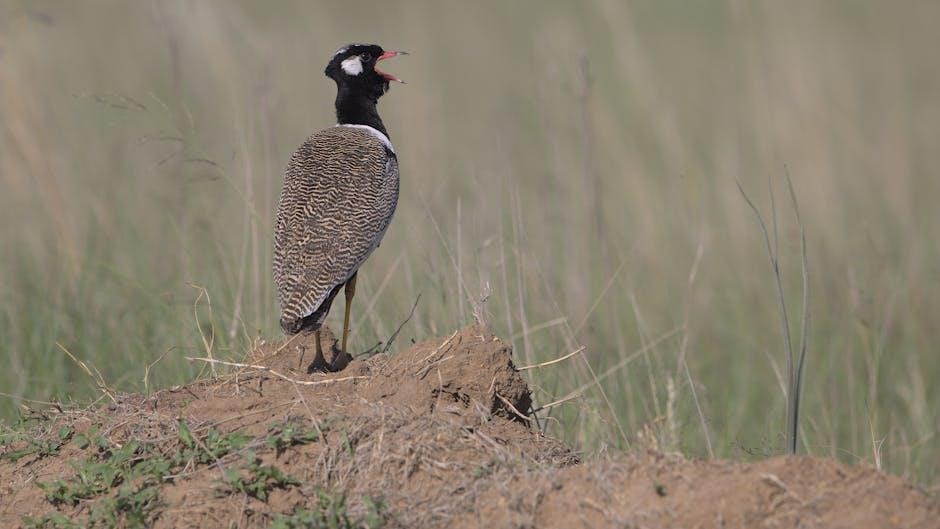
Seasonal Birding Guide
Explore Illinois’s birdlife year-round with seasonal highlights. Spring migration brings vibrant warblers, while winter offers unique opportunities to spot species like snowy owls and snow buntings.
12.1 Spring Migration Highlights
Spring migration in Illinois is a spectacular event, bringing a surge of colorful warblers, tanagers, and orioles. Peak migration occurs in late April and early May, with key hotspots like Lake Michigan shores and prairie wetlands teeming with activity. Birders can spot species like the Baltimore Oriole, Scarlet Tanager, and Yellow Warbler. This period also offers unique opportunities to observe rare migrants and breeding behaviors, making it a prime time for field observations and photography.
12.2 Winter Birding Opportunities
Winter birding in Illinois offers unique opportunities to observe hardy species like snowy owls, snow buntings, and rough-legged hawks. Frozen lakes and open fields attract waterfowl such as mergansers and goldeneye ducks. Birders can also spot wintering sparrows and finches in shrublands. Key locations include the Illinois River Valley and Lake Michigan shoreline, where cold-weather birds congregate. Winter provides a chance to see species not present during warmer months, enhancing the state’s avian diversity.
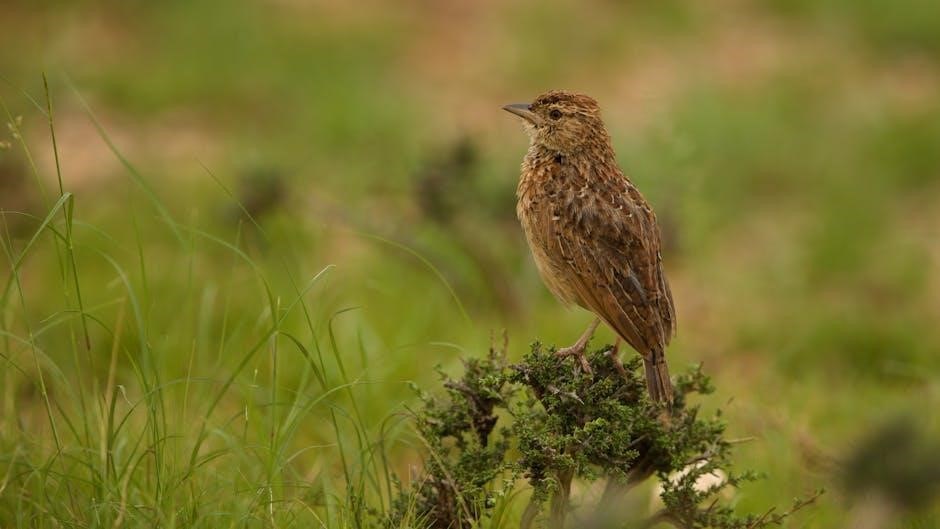
Resources and Further Reading
Explore field guides, online tools, and communities for deeper insights into Illinois birding. The Illinois Ornithological Society offers comprehensive resources and updates for enthusiasts.
13.1 Recommended Field Guides
For identifying birds in Illinois, the Sibley Guide to Birds and the National Audubon Society Field Guide are excellent resources. These guides feature detailed descriptions, range maps, and high-quality images to aid in accurate identification. Many field guides are organized by bird families or plumage colors, making species recognition easier for birders of all levels.
Additional recommendations include Birds of Illinois by Robert A. Montgomery, which covers the state’s avifauna comprehensively. These guides are indispensable for understanding Illinois’s bird diversity and staying updated on the latest research and sightings.
13.2 Online Tools and Communities
Online tools like eBird and Merlin Bird ID are invaluable for Illinois birders. These platforms provide real-time sightings, identification tips, and species distribution maps. Additionally, communities on social media and forums like Birding-Aus or local Illinois birding groups offer a space to share observations and learn from experienced birders. Websites like Xeno-canto are essential for learning bird calls.
These resources enhance birding experiences and foster connections among enthusiasts.
Illinois’s rich bird diversity offers endless exploration opportunities. Conservation efforts and field guides ensure sustainable bird populations, inspiring future generations to appreciate and protect avian life.
14.1 Summary of Key Points
Illinois is home to over 459 bird species, making it a vibrant destination for birders. The state’s diverse habitats, from wetlands to forests, attract both migratory and resident birds. Field guides are essential tools for identifying species, while conservation efforts protect these birds and their habitats. Community engagement and awareness play a crucial role in preserving Illinois’s avifauna, ensuring a rich birding experience for future generations.
14.2 Encouragement for Further Exploration
Exploring Illinois’s bird diversity is a rewarding journey that connects you with nature and fosters a deeper appreciation for wildlife conservation. With over 459 species to discover, every season offers new opportunities to spot unique birds in diverse habitats. Grab a field guide, join local birding communities, and venture into wetlands, forests, or even your backyard to uncover the fascinating world of Illinois birds. Your curiosity can make a difference in their conservation and your own connection to the environment.
